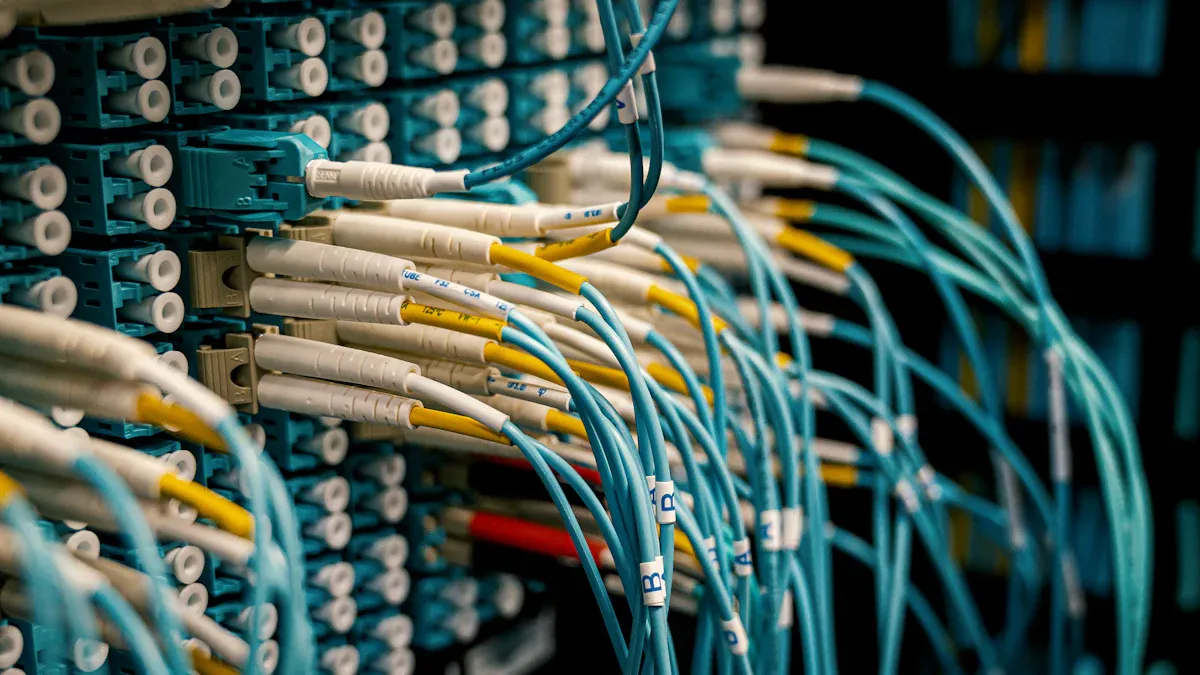
Clean rooms demand communication tools that prioritize sterility and reliability. Joiwo’s JWAT401 Emergency Handsfree Telephone meets these needs with its innovative design. This industrial heavy duty telephone enables handsfree operation, ensuring hygiene remains uncompromised. From clean rooms to téléphone sans ascenseur systems, this device sets a new standard for secure and efficient communication, even in demanding environments, including traffic emergency telephone applications.
Challenges in Clean Room Communication

Clean rooms are highly controlled environments where even the smallest misstep can compromise sterility and safety. Communication in these spaces comes with its own set of challenges, which must be addressed to maintain efficiency and reliability.
Maintaining Sterility
Sterility is the cornerstone of clean room operations. Every surface, tool, and piece of equipment must meet strict hygiene standards. Traditional communication devices, like handheld phones, can introduce contaminants. These devices often have crevices and buttons that are difficult to clean thoroughly. Over time, they can harbor bacteria or other particles, jeopardizing the sterile environment.
Emergency handsfree telephones, such as the JWAT401, solve this problem by eliminating the need for physical contact. Their smooth, gap-free design ensures easy cleaning and prevents contamination. This handsfree operation allows users to communicate without compromising sterility, making them an ideal choice for clean rooms.
Limited Physical Interaction
In clean rooms, physical interaction is often restricted to minimize contamination risks. Workers may wear gloves, masks, and other protective gear, which can make using traditional communication tools cumbersome. This limitation can slow down workflows and hinder effective communication.
Research highlights the importance of physical interaction in communication. For example:
| Study Title | Key Findings |
|---|---|
| The effect of co-location on human communication networks | Physical co-location is crucial for forming weak ties in communication networks, which are essential for spreading ideas and opportunities. Removing physical interaction hinders the formation of these ties, leading to increased redundancy in communication. |
| Face-to-face more important than digital communication for mental health during the pandemic | Face-to-face communication significantly impacts mental health more than digital communication, indicating the importance of physical interaction for well-being. |
Emergency handsfree telephones address this challenge by enabling seamless communication without the need for direct contact. Workers can stay connected while adhering to clean room protocols, ensuring both safety and efficiency.
Emergency Response Needs
Emergencies in clean rooms require immediate action. Whether it’s a chemical spill, equipment failure, or medical emergency, quick communication can make all the difference. Traditional communication tools may not always be reliable in such situations. They can fail due to environmental factors or require physical interaction, which may not be feasible during an emergency.
Emergency handsfree telephones are designed to overcome these obstacles. Their loud-speaking functionality ensures clear communication, even in noisy environments. With features like tamper-proof screws and durable stainless steel construction, these devices remain operational in the most demanding conditions. They provide a reliable lifeline during emergencies, helping teams respond quickly and effectively.
Features of the JWAT401 Emergency Handsfree Telephone
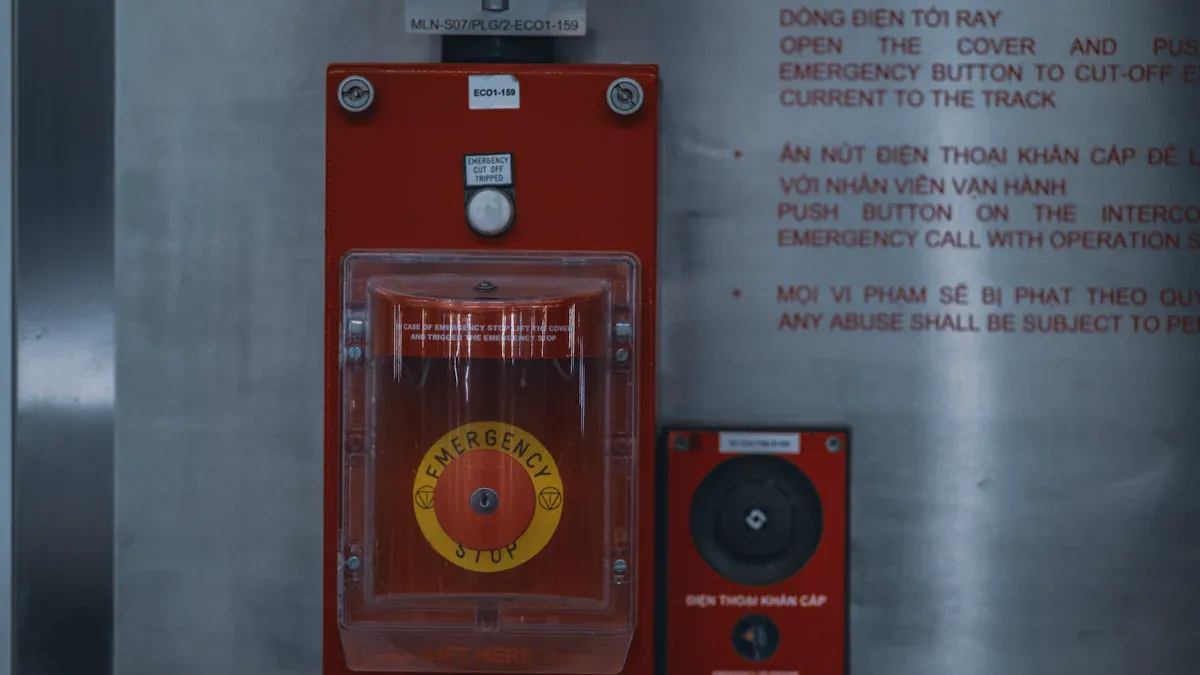
Handsfree Operation for Sterile Environments
Maintaining sterility in clean rooms is no small task. Every piece of equipment must meet strict hygiene standards, and the JWAT401 Emergency Handsfree Telephone excels in this area. Its handsfree operation eliminates the need for physical contact, allowing users to communicate without touching the device. This feature is especially valuable in environments where workers wear gloves or other protective gear, making traditional phones impractical.
The benefits of handsfree operation are well-documented. For instance, several case studies highlight how handsfree systems improve sterility and efficiency:
| Case Study Description | Key Improvements | Impact on Sterility |
|---|---|---|
| Cell therapy production unit | 40% reduction in time spent on sink activities | 62% decrease in contamination events |
| Semiconductor manufacturer | 35% reduction in sink space | Improved compliance with cleaning protocols |
| Pharmaceutical manufacturing unit | Efficiency gains through workflow analysis | Enhanced overall cleaning effectiveness |
| Medical device production facility | 24% increase in efficiency with minimal investment | Maintained sterile conditions despite budget constraints |
These examples demonstrate how handsfree communication tools like the JWAT401 can revolutionize workflows while maintaining the highest hygiene standards.
Durable and Hygienic Design
The JWAT401 is built to last. Its construction from 304 stainless steel ensures durability and resistance to corrosion, even in harsh environments. This material also makes the phone easy to clean, as its smooth surface prevents dirt and bacteria from accumulating. The absence of gaps or crevices further enhances its hygienic design, making it ideal for clean rooms and other sterile settings.
This emergency handsfree telephone is also designed to withstand tough conditions. With an IP54-IP65 waterproof rating, it can handle exposure to moisture and dust. Its anti-vandalism level of IK9 ensures it remains functional even in high-traffic or challenging environments. Whether installed indoors or outdoors, the JWAT401 delivers reliable performance.
Advanced Emergency Features
Emergencies demand quick and reliable communication, and the JWAT401 is up to the task. Its loud ringer, exceeding 85dB(A), ensures that alerts are heard even in noisy settings. The handsfree operation allows users to respond immediately, without fumbling with buttons or handsets. Additionally, the phone’s robust construction and tamper-proof screws ensure it stays operational when it’s needed most.
Here’s a closer look at the technical features that make the JWAT401 a standout choice:
| Feature | Description |
|---|---|
| Construction Material | 304 stainless steel, vandal resistant |
| Protection météorologique | Classe d'étanchéité IP54-IP65 |
| Hands-free Operation | Yes |
| Compliance Certifications | CE, FCC, RoHS, ISO9001 |
| Operating Temperature | -40 à +70°c |
| Niveau antivandalisme | IK9 |
| Volume de sonnerie | Nombre d'unités |
| Weight | 2 kg |
These advanced features make the JWAT401 a reliable and versatile solution for clean rooms, laboratories, and other critical environments. Its ability to perform under extreme conditions ensures that communication remains uninterrupted, even during emergencies.
Benefits of Emergency Handsfree Telephones
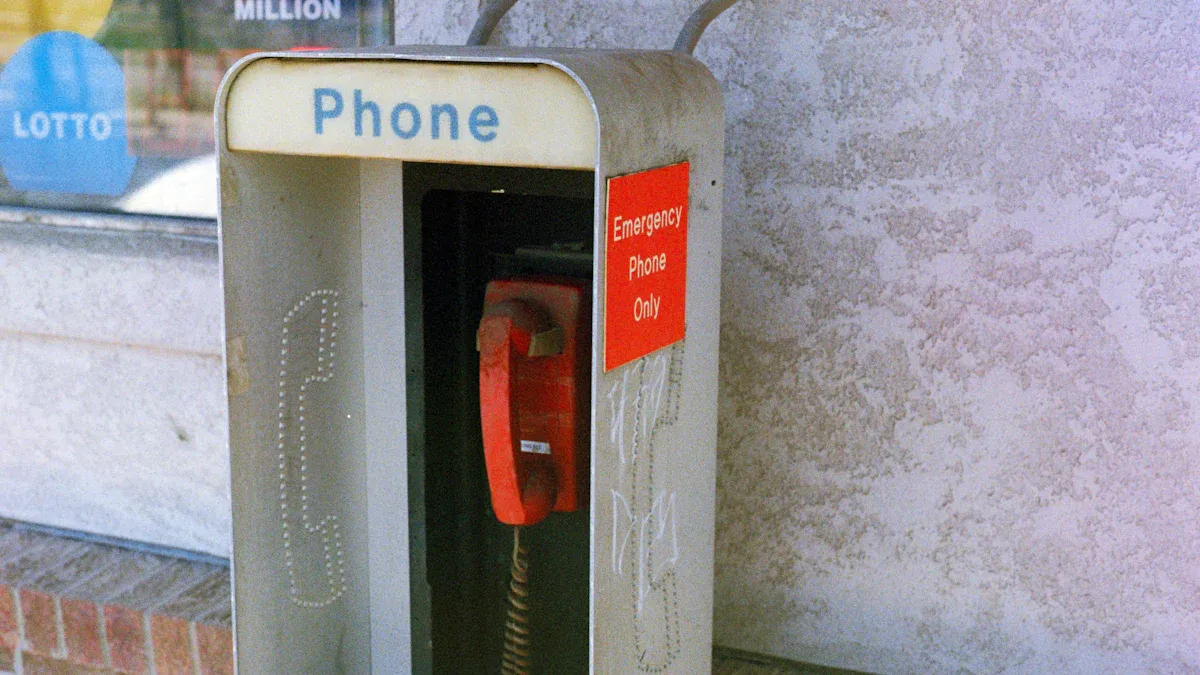
Sécurité accrue et interventions d'urgence
Safety is a top priority in clean rooms and other critical environments. Emergency handsfree telephones play a vital role in ensuring quick and reliable communication during emergencies. Their advanced features, like loudspeakers and noise reduction technology, make them indispensable in high-stakes situations.
- In cement plants, where noise and dust are constant challenges, these phones improve call clarity. This reduces misunderstandings and enhances safety.
- Nuclear power stations rely on precise communication. The noise reduction capabilities of these phones ensure accurate information exchange, safeguarding operations.
- In commercial areas, emergencies can be chaotic. These phones provide clear communication, enabling rescue teams to act quickly and effectively.
By addressing these challenges, emergency handsfree telephones help create safer environments for workers and responders alike.
Improved Workflow Efficiency
Efficiency is essential in clean rooms, where every second counts. Emergency handsfree telephones streamline communication, allowing workers to focus on their tasks without interruptions. A study on hands-free documentation in emergency medical settings highlights this benefit. It showed a significant drop in medical word error rates, from 69.85% to 33.3%. Additionally, the F1 score, which measures accuracy, improved from 0.611 to 0.81.
These results demonstrate how handsfree communication tools enhance accuracy and save time. In clean rooms, this translates to smoother workflows and fewer delays. Workers can communicate seamlessly, even while wearing protective gear, ensuring that operations run efficiently.
Compliance with Clean Room Standards
Clean rooms operate under strict regulations to maintain sterility and safety. Emergency handsfree telephones, like the JWAT401, meet these high standards. Their smooth, stainless steel surfaces are easy to clean, preventing contamination. The absence of gaps or crevices ensures that bacteria and particles cannot accumulate.
These phones also comply with international certifications, including CE, FCC, RoHS, and ISO9001. This guarantees their reliability and suitability for use in sensitive environments. By integrating these devices, clean rooms can maintain compliance while improving communication and safety.
Applications of Emergency Handsfree Telephones
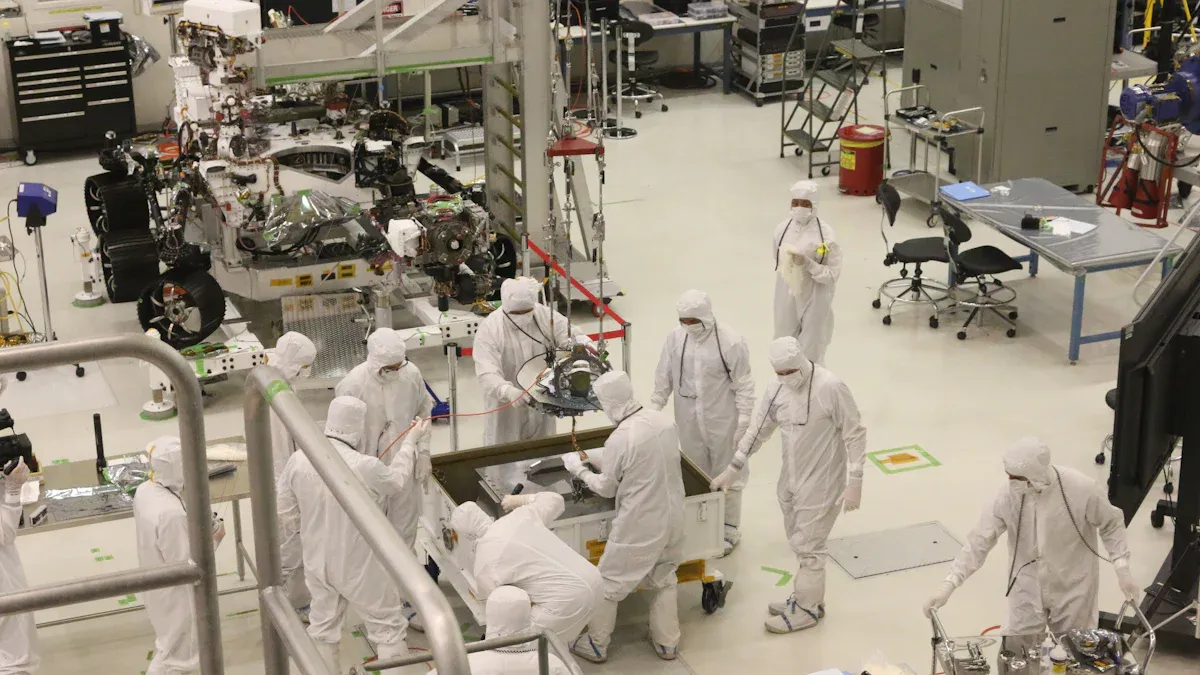
Pharmaceutical and Laboratory Settings
Pharmaceutical and laboratory environments demand precision and sterility. Communication tools in these spaces must meet strict hygiene standards. Emergency handsfree telephones excel in these settings by offering handsfree operation and easy-to-clean surfaces. Workers can communicate without compromising sterility, even while wearing gloves or protective gear.
These phones also enhance safety during emergencies. For example, a chemical spill or equipment malfunction requires immediate action. The loud ringer and handsfree functionality ensure quick communication, helping teams respond effectively. Their durable design withstands harsh conditions, making them reliable in high-pressure situations.
The growing demand for explosion-proof communication devices highlights their importance in industries like pharmaceuticals. With the market projected to reach USD 1.07 billion by 2030, these tools are becoming indispensable for maintaining safety and efficiency.
Semiconductor Manufacturing
Semiconductor manufacturing involves highly controlled environments where contamination can ruin production. Emergency handsfree telephones provide a solution by enabling communication without physical contact. Their smooth, stainless steel design prevents dirt and particles from accumulating, ensuring compliance with clean room standards.
These phones also improve workflow efficiency. Workers can stay connected without interrupting their tasks, even in noisy settings. The loud ringer and noise reduction technology ensure clear communication, reducing misunderstandings. Their robust construction, including tamper-proof screws, makes them ideal for high-traffic areas like semiconductor facilities.
The versatility of these devices is evident in their widespread use across industries. From subways to offshore engineering, they prove their reliability in critical environments.
Healthcare and Isolation Areas
Healthcare facilities and isolation areas require communication tools that prioritize hygiene and safety. Emergency handsfree telephones meet these needs with their handsfree operation and hygienic design. Medical staff can communicate seamlessly, even while wearing protective gear.
During emergencies, these phones become lifelines. Their loud ringer ensures alerts are heard, while the handsfree functionality allows immediate response. Whether in hospital isolation rooms or emergency wards, they help teams coordinate effectively.
The oil and gas sector’s reliance on emergency communication systems underscores their importance. These phones are designed for hazardous conditions, making them equally suitable for healthcare environments where sterility and reliability are critical.
Emergency handsfree telephones, like the JWAT401, transform communication in clean rooms. They tackle sterility, safety, and efficiency challenges head-on. Their durable design and advanced features make them a must-have for critical environments. Whether in healthcare, laboratories, or manufacturing, these devices ensure smooth operations while maintaining the highest standards.
FAQ
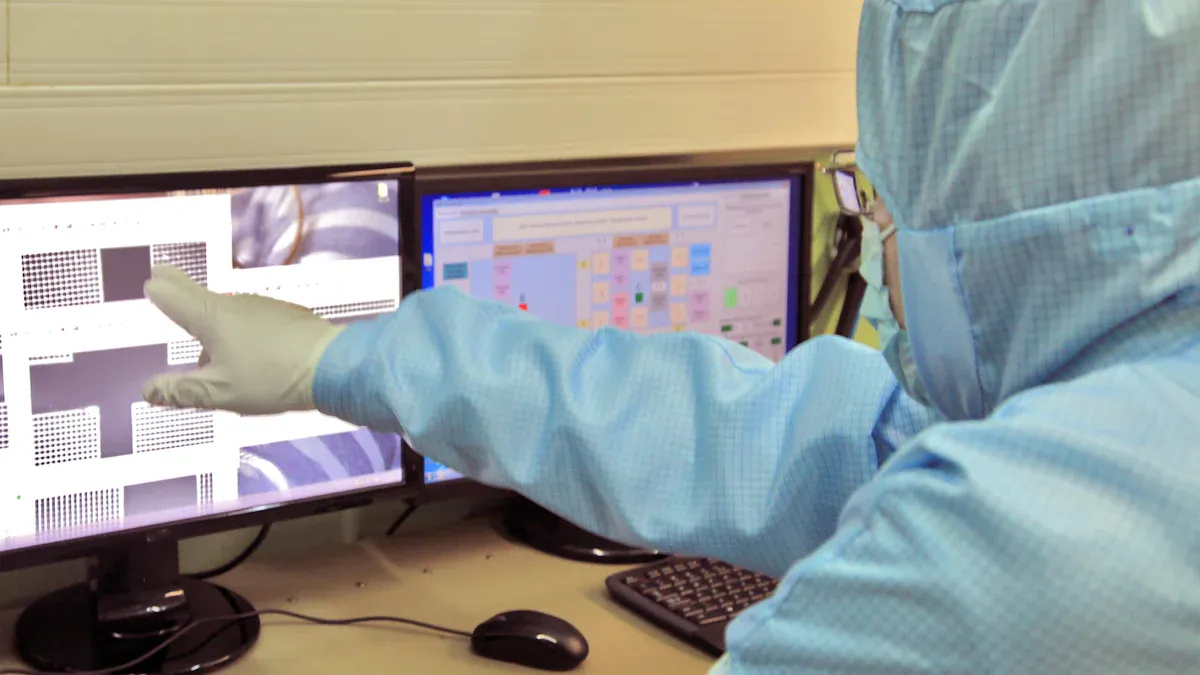
What makes the JWAT401 suitable for clean rooms?
The JWAT401’s handsfree operation and stainless steel design ensure sterility. Its smooth surface prevents contamination, making it ideal for controlled environments.
Can the JWAT401 handle extreme conditions?
Yes! With an Classe d'étanchéité IP54-IP65 and IK9 anti-vandalism level, it performs reliably in harsh environments, including high humidity and extreme temperatures.
Le JWAT401 est-il personnalisable pour des besoins spécifiques?
Absolutely! Joiwo offers versions with or without keypads. Additional function buttons can be tailored to meet unique requirements.
💡 Tip: For more details on customization options, contact Joiwo directly!


